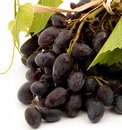|
No, Sipping And Swallowing Isn't Quite Wine Tasting.Many of us think "Yeah, I know what wine tasting is, I do it every time I have a glass of wine, don't I? When we are drinking wine, we are not really tasting the wine. Yes, of course we can feel something in our mouth, and usually it is very pleasant. But wine tasting is a term that indicates a very conscious activity. When we are engaged in this activity we are concentrating on what we are feeling, and what the smell reminds us of. We are not distracted by the conversation or the food. We are engaged in a focused task. I don't know how you feel about wine tasting. Do you feel intimidated? silly? intrigued? Does it feel to much like a chore? Do you want to learn how to do it right so that you can further your understanding and enjoyment of wine? I'll give you a few pointers about tasting and about wine ratings so that you can feel confident about what you are doing. To learn more about wine ratings go to this page. 
One important thing to remember is that everyone tastes differently. By this I mean that some of us have less taste buds than others. Some are "super tasters", able to detect tastes that others cannot. This has nothing to do with being a smarter wine drinker, or a wine expert. Does this mean that those among us that have fewer taste buds, should not attempt wine tasting? No, we have as much right as anyone else to enjoy wine and to learn about it. The number of taste buds may vary, but our interest and enjoyment is not diminished by this fact. So do not be deterred, and go for it. Try some types of white wine one time, then concentrate on some types of red wine at another time. You will learn a lot.
So how do we conduct this mysterious ritual? The first thing to do is to look at the wine. Hold the glass up to the light and see if the wine is clear or cloudy. Check the color. How deep or how light is it? Take A Sniff. Take Several!Now put the glass to your nose and sniff. Don't take a loooong sniff, take several short ones (all right, you can take a long sniff if you want, it is your wine so enjoy). While you are doing this, try to figure out what you are smelling. Does it smell like earth? Does it smell lemony? The smell is the most important thing because it is what gives us the variety in the taste. Taste experts tell us that taste buds can only detect sweet, sour, salty, and bitter. It is the sense of smell that give us the distinctiveness of berries or bananas.
After we look and smell, that is when we get to actually taste the wine. Take a sip and hold it in your mouth. Pay attention to how it feels in your mouth. Does it feel like skimmed milk or like cream? Swish the wine around your mouth, unless you feel totally silly doing it. You can be a bit more inconspicuous and just let the wine gently swirl around your mouth as you try to smell the wine through your mouth. At this point you can tell yourself, or others if you are having a wine tasting party (I recommend it), what your conclusions are. Is it light and crisp? Does it make you think of herbs, or fruits? What do others in your party think about the same wine? can others detect the same flavor? or do they find others that you have not? You can take some wine tasting notes, Click here to learn how to write tasting notes to remind yourself of what you have tasted, and your reaction. Go ahead and host a tasting party, you will learn and have fun at the same time. Click here for ideas about how to hoste a wine tasting party Its not Silly, Its not Snobbish, Its Fun!Back to Home Page from Wine Tasting
|






